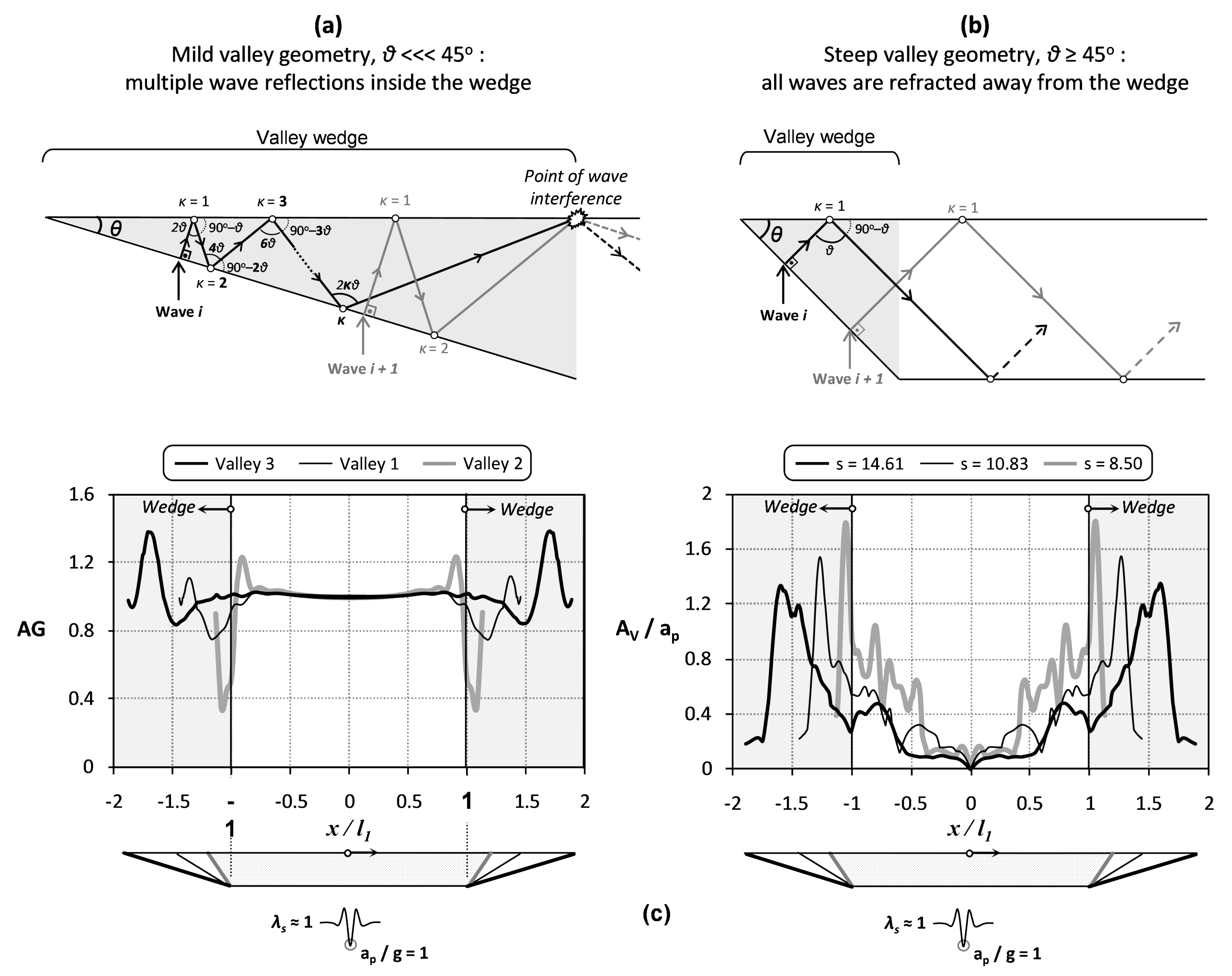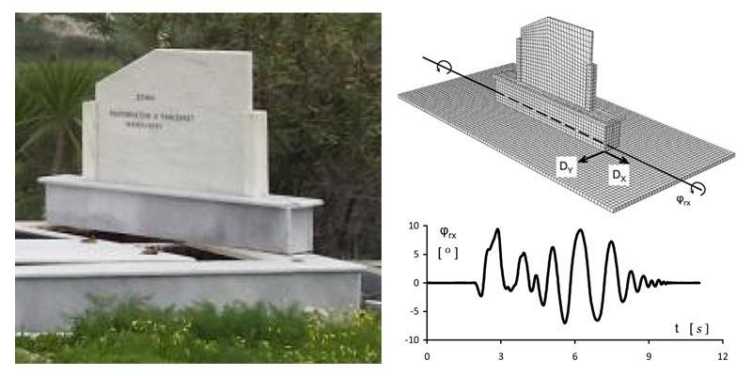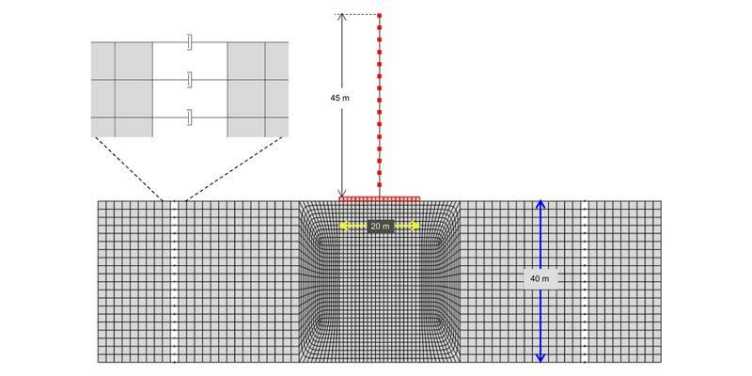Site effects and Ground Motion Characterization
Site effects play a key role in earthquake engineering and ground motion characterization, as they may lead to significant amplification of the seismic waves. Site response analyses have confirmed the importance of 2D geometry effects, clearly suggesting that 1D soil amplification phenomena may be significantly aggravated by laterally propagating surface waves. Despite the significance of such 2D effects and the extensive bibliography on the subject, most of the research had focused on elastic soil response and idealized input motions.
As part of the ERC-funded project DARE, we explored 2D wave propagation considering nonlinear soil response and the key characteristics of the base motion, such as its frequency content (external page J27). After validating our nonlinear analysis method against field measurements from the Ohba valley in Japan, we conducted a formal dimensional analysis accounting for nonlinear soil response, thus augmenting the generalization potential of our results, and providing a novel framework for future research on the subject (external page J42).

Following the 2017 Mw7.1 Puebla earthquake in Mexico, which took place exactly 32 years after the notorious 1985 Michoacan Mw8 earthquake, we investigated the role of 2D site effects in the seismic motions that shook Mexico city (external page J86, external page J103). Our numerical analyses showed that the observed “beating” in the recorded motions can only be explained by soil–building–soil interaction, in addition to 2D site effects due to the underlying valley geometry.
Ground shaking in close proximity of a seismic fault may be affected by wave propagation effects known as “forward-rupture directivity”, and by tectonic deformations producing a permanent ground offset known as “fling step.” We have been investigating the destructive potential of such “near-fault” seismic motions by analysing idealized sliding systems. Besides deriving insights on the effect of amplitude and duration of near-fault pulses, our work demonstrated the insensitivity of sliding response to the vertical motion (external page J25). Seemingly “small details” in the record were shown to exert a profound influence on the magnitude of slippage – far outweighing peak acceleration or Arias intensity (external page J33). The significance of directivity effects was further explored by studying case histories of toppling of monuments (sculptures, tomb‐stones) after the 2014 Mw6 Cephalonia earthquake (external page J73).
Several attempts have been made to correlate earthquake-induced deformations to seismic motion intensity measures (IMs). Besides the obvious ones (e.g., peak ground acceleration), more sophisticated IMs have been proposed, such as the Housner and Arias intensity. The possibility to correlate with IMs has been investigated, but a general agreement on those IMs that allows the best correlation with deformations is yet to be reached. To address this issue, we recently proposed a combined-IM matching approach to characterize, select, and generate input motions for displacement-based analyses (external page J85). By applying the proposed approach, more consistent earthquake-induced deformations, comparable levels of damage, and less uncertain estimates of slope performance can be reached.

Selected recent publications

Garini, E., Gazetas, G., Anastasopoulos, I. (2017). “Evidence of significant forward rupture directivity aggravated by soil response in an Mw6 earthquake and the effects on monuments”, Earthquake Engineering & Structural Dynamics, 46(13): 2103-2120. (external page J73)

Marin, A., Truffer, P.L., Anastasopoulos, I. (2019). “Combined-intensity-measures matching approach for improved performance-based design of slopes”, Soil Dynamics and Earthquake Engineering, 126 (external page J85)

Garini, E., Anastasopoulos, I., Gazetas, G. (2020). “Soil, basin and soil–building–soil interaction effects on motions of Mexico City during seven earthquakes”, Géotechnique, 70(7): 581-607 (external page J86)